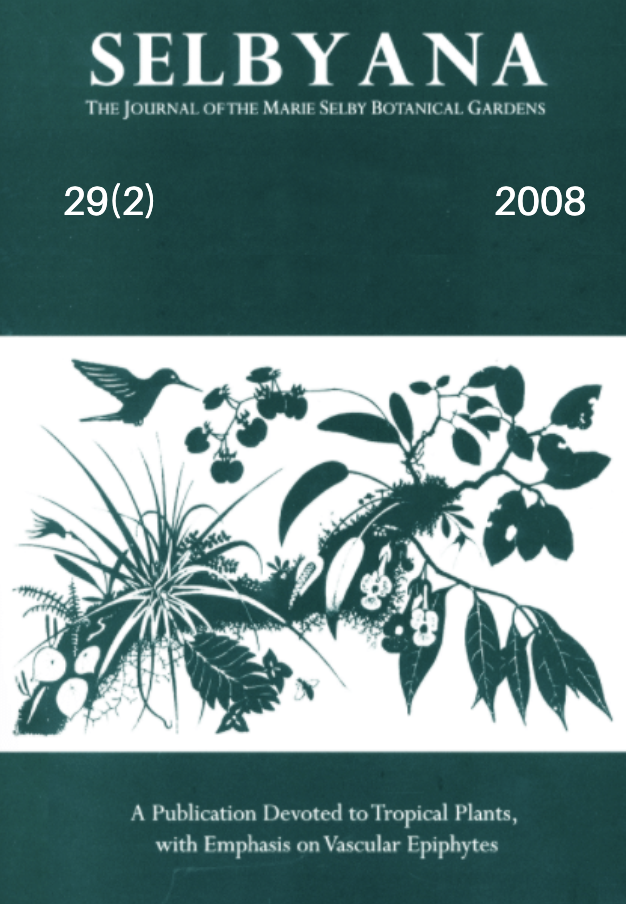Abstract
The diversity and the distribution of epiphytic orchids in Kibale National Park were investigated. Sampling was by the canopy-based methods that included the Single Rope Technique and a local climber. There were 57 species dominated by genera Polystachya, Bulbophyllum, Tridactyle, Angraecum, and Diaphananthe. There was a weak positive correlation between the orchid's species and basal area of the host trees, but no significant difference in the number of orchid's species between the logged and unlogged forests. Bark inhabitant orchids were characterized by succulence as one of the structural adaptations for water conservation against drought. Most species occurred in the light humus substrate that consisted mainly of bryophyte mats with adequate water retention capacity. Epiphytic orchids were characterized by host preference and not specificity. The most favored phorophytes in un-logged and logged forests were Parinari excelsa, Strombosia scheffleri, Symphonia globulifera, Mitragyna rubrostipulata and Pseudospondias microscarpa. The general pattern of the vertical distribution of epiphytes was that of an increase from the tree base to branch zones and thereafter a decline to the top branch zone. The canopy zones had similar epiphyte communities that were different from that of the host trunk zone.
Open Access and Copyright Notice
Selbyana is committed to real and immediate open access for academic work. All of Selbyana's articles and reviews are free to access immediately upon publication. There are no author charges (APCs) prior to publication, and no charges for readers to download articles and reviews for their own scholarly use. To facilitate this, Selbyana depends on the financial backing of the Marie Selby Botanical Gardens, the hard work and dedication of its editorial team and advisory board, and the continuing support of its network of peer reviewers and partner institutions.
Authors are free to choose which open license they would like to use for their work. Our default license is the Creative Commons Attribution-NonCommercial 4.0 (CC BY-NC 4.0). While Selbyana’s articles can be copied by anyone for noncommercial purposes if proper credit is given, all materials are published under an open-access license with authors retaining full and permanent ownership of their work. The author grants Selbyana a perpetual, non-exclusive right to publish the work and to include it in other aggregations and indexes to achieve broader impact and visibility.
Authors are responsible for and required to ascertain that they are in possession of image rights for any and all photographs, illustrations, and figures included in their work or to obtain publication or reproduction rights from the rights holders. Contents of the journal will be registered with the Directory of Open Access Journals and similar repositories. Authors are encouraged to store their work elsewhere, for instance in institutional repositories or personal websites, including commercial sites such as academia.edu, to increase circulation (see The Effects of Open Access).
